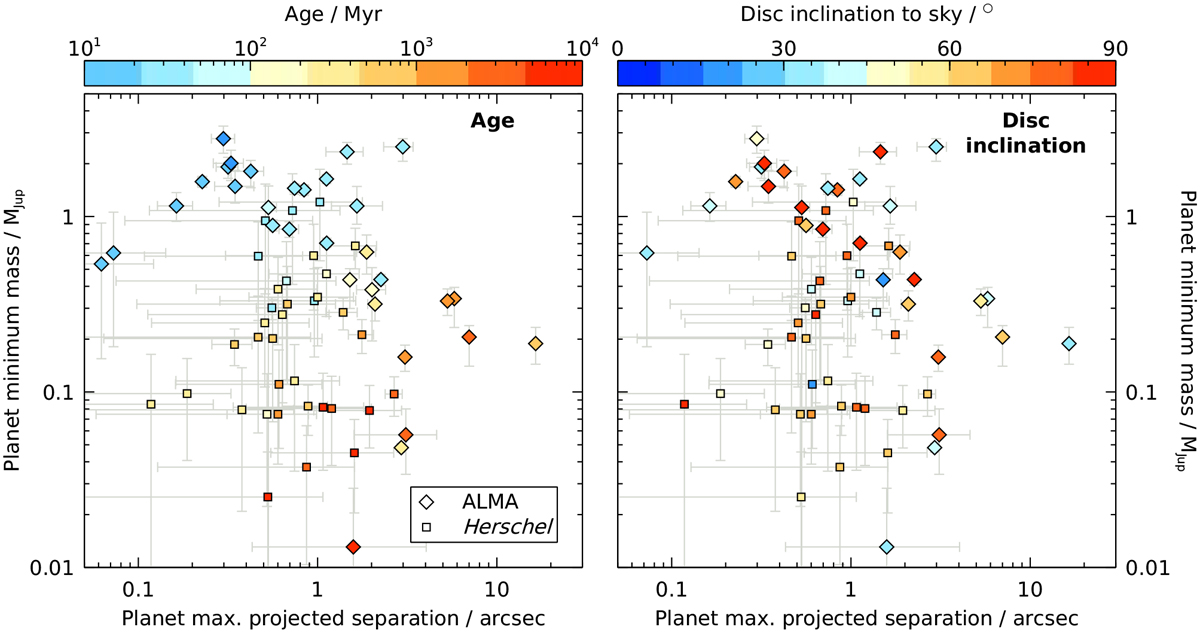Fig. 16

Download original image
Identification of our predicted planets with the best chances of future detection (Sect. 5.2). Points show the minimum masses and maximum projected separations of the planets predicted to be sculpting the inner edges of our discs if one planet is responsible in each system (Sect. 3.1). Only systems where the disc is resolved by ALMA (diamonds) or Herschel (squares) are shown. Left plot: systems coloured by age. Right plot: systems coloured by disc inclination to the sky. The best targets have predicted planets with high masses, which are well separated from their stars, are young (so the planets are brightest), and have low-inclination discs (so a coplanar planet would be separated from its star in projection over a large fraction of its orbit). JWST will be capable of imaging 0.1−1 MJup planets at approximately arcsecond separations (Beichman et al. 2010; Carter et al. 2021), and this should be complemented at small angular separations by upcoming instruments such as VLT/ERIS (Davies et al. 2018), so many of these predicted planets could be observable in the near future. The plots show the single planets required to sculpt each disc, but if multiple planets were instead responsible (Sect. 3.2), then those planets could be at least an order of magnitude less massive than those shown here. The planets required to stir each disc are typically smaller than those shown (Sect. 4.2). We note that some systems are missing from the right plot because they lack inclination information.
Current usage metrics show cumulative count of Article Views (full-text article views including HTML views, PDF and ePub downloads, according to the available data) and Abstracts Views on Vision4Press platform.
Data correspond to usage on the plateform after 2015. The current usage metrics is available 48-96 hours after online publication and is updated daily on week days.
Initial download of the metrics may take a while.


